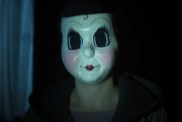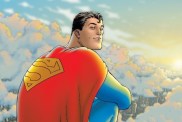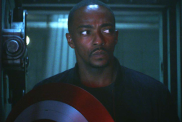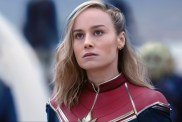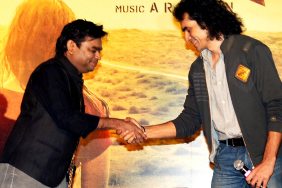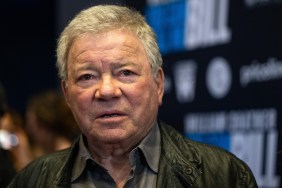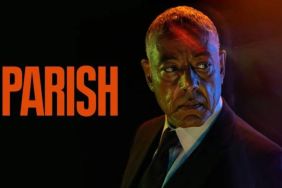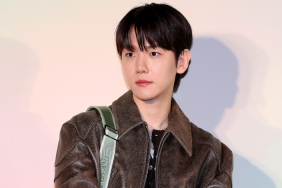
Drew Goddard‘s name entered social consciousness in 2008 when his screenplay for the monster feature Cloverfield assaulted the box-office following a lengthy and mysterious marketing campaign. That film, produced by J.J. Abrams and directed by Matt Reeves, did a lot for all three men, but the truth is all three men had been around for a long time.
Goddard’s roots begin as a writer on a trio of Joss Whedon television creations in “Buffy the Vampire Slayer” and “Angel“. He also worked with Abrams on “Alias” and then “Lost” following his screenplay for Cloverfield. And after working with the creative minds of Whedon and Abrams it’s no surprise Goddard would eventually move on to his own project, that being The Cabin in the Woods, a film that marks his directorial debut from a kernel of an idea popped by Joss Whedon.
The idea was as simple as the film’s plot synopsis: Five friends go to a remote cabin in the woods. Bad things happen. And it would appear the writing of it was equally as simple as it took Goddard and Whedon a weekend to write a script that explores the horror genre, standing “on the shoulders of the giants that had come before [them]” as Goddard tells me, while also hoping to “move the ball further down the field.” Pitching this idea, while simple in one sense and radically new in another, to a studio wasn’t going to be as easy and was going to take some risk.
“We knew we couldn’t pitch it is the truth,” Goddard said very matter-of-fact, but grinning at the idea it was made nonetheless. “After having made it I don’t know how we would go pitch it because it’s so different and weird. So we did something a little unconventional. We wrote it first entirely and then did the budgets and schedules and figured out everything so we could take it to them and show them the whole package with some storyboards and say, ‘This is what it is…’ We knew this is not a film that surmises easily in one sentence.”
The budget ended up being in the $25 million range, while low-budget, that’s still a rather lofty number for a directorial debut with an unpitchable screenplay, so perhaps they may have been on to something with the idea to actually put in work beforehand. That, of course, takes risk and passion… something clearly lacking in today’s cinematic environment, but not here.
“It’s hard because then you have risk that no one is going to want it and then you’ve wasted all that time, but that was a risk we were willing to take,” Goddard said, realizing the extra work he and Whedon put in is what ultimately paid off. “That’s why people don’t normally do it, but we felt confident this one [would get made]. Especially because we knew we could keep the budget down, and if [we could] keep the budget down we knew we could get away with some crazy stuff. That was really the trick.”
“We knew [if we could] keep the budget down…
we could get away with some crazy stuff
That was really the trick.”

Without giving anything away, all I will confirm is “crazy stuff” does happen and a lot of it is aided by the fact Goddard and his team used practical effects rather than a bunch of digital creations, and I couldn’t help but ask why CG effects cost a production so much more than practical when the authenticity of well-made practical effects always feel more authentic.
“That’s right, it’s a visceral quality that you can only get in something that’s actually in front of you,” Goddard agreed. As for the cost for digital effects, “The reason it costs more, I don’t really know. It’s sort of magic. You’re like, ‘Why does that cost $100,000?’ and they say, ‘Because that’s what it costs.’ You can’t argue with it. It’s hard. They have a lot of overhead, every CG company has hundreds of visual effects artists they have on payroll and all of that gets amortized into the cost.
“So I found, certainly for our costs, it’s much easier to have two guys make a guy in a suit than it is to pay those prices. And I just like it better, quite honestly.”
One effect that is wholly practical is the amount of blood spilled in the film. I asked Goddard if he had a number such as the 450 gallons number attributed to Quentin Tarantino‘s Kill Bill features. He didn’t. Though he did say, “I wanted to beat Stanley Kubrick‘s record [from The Shining] but the problem is he did so many takes of that elevator dump they did that we realized about halfway through there was no way we were ever going to top that record. So it was very sad.”
Kubrick’s record, to my knowledge, isn’t actually known outside of saying “several thousand gallons” were used, but I don’t think Goddard should feel too sad, it’s hard to top the master.
However, considering how much blood is spilled, I was a bit surprised at how The Cabin in the Woods isn’t really all that scary. While what scares us is certainly different from one person to the next I couldn’t help but bring it up and it would seem scares weren’t priority number one.
“There are definitely sub-genres within the horror genre, and I definitely wanted to fall more into the ‘fun’ horror movie than the traumatic horror movie,” he said. “Don’t get me wrong, I love those sometimes, but I wanted this one to be one where you’re laughing as much as you’re screaming.”
I’d argue the screams are limited, but the laughs are not and neither is the search for the elements of the horror genre he and Whedon mine with their script, but I’ll leave those for you to explore. As Goddard says, “I packed a lot of DVD freeze frame excitement into this movie.”

From here, Goddard’s next steps aren’t entirely set in stone, but he has turned in his drafts for Robopocalpyse, an adaptation of Daniel H. Wilson‘s apocalyptic sci-fi which will be directed by Steven Spielberg. But as he tells me, “I always feel like you’ve never finished a script until they’re shooting and they’re not shooting yet, but I’ve definitely turned in my drafts.”
He wasn’t able to say too much about the film given what he calls “a pretty heavy cone of secrecy” but he did say, “One of the things that excited me most about it was the opportunity to work with Spielberg on something he does better than anyone in the world, which is epic science fiction. There’s nobody better at it. So I feel like the source material gives you that way in and I’m excited for people to see what he does.”
The story is told through a fragmented series of events exploring the fate of the human race following a robot uprising and as for how he tackled that he said, “Any time you’re dealing with an epistolary tale where it’s fragmented you know you’re not going to be able to do just a standard, straight-forward adaptation, you know you’re going to have to make some changes.” The changes he made he couldn’t tell me, but having read the novel myself I fully expected changes to a story I would describe as “World War Z” meets “The Road” meets Philip K. Dick.
As for the frequently brought-up idea of a Cloverfield 2 he says, “None [of the Cloverfield team] wants to make sequels just for the sake of making sequels. We’ll make them [if the story is there]. I like sequels if they’re well done and feel like they’re separate and have something to say, so I’m not against it. But no one wants to just rehash what we’ve already done. I think that’s true of all of these things, be it Cabin or Cloverfield.”
So if a sequel were to get made don’t go in expecting another monster to destroy yet another city. “We didn’t want to do it if it would be that simple,” Goddard told me. “I’s more about can we find that idea and can we get something that excites J.J., Matt Reeves and I? Because Cloverfield was very much a discussion between the three of us so I don’t think anyone would want to do it without those three people.”
The Cabin in the Woods hits theaters this Friday, April 13. I’ve included the trailer directly below and you can get more information, pictures and trailers by clicking right here.

